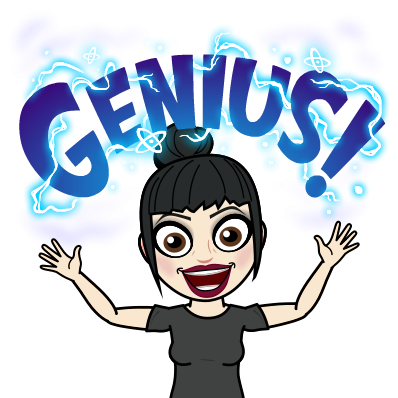Remember that time in January that I had to do a Demo Slam at the Winter Google Summit? One of the slams that really stuck with me was one called Your Email Signature Sucks by Jeremy McBrayer. He showed us a super simple trick for setting up an email signature in Google Docs, and then using copy/paste to your GMail settings to give you a spiffy-looking signature that features both an image and some text (usually, your name and contact info) right next to each other.
I used his trick immediately after returning from the Summit, and I've even used it for my non-professional accounts because I love how the formatting makes my emails look so nice!
 |
| My current email signature |
I began to think about how this trick could be useful in other applications, and then it clicked: my students need to create signatures for their email accounts, too! Perhaps you're aware of the phenomenon that is students who never remember to put their name on anything... well, it happens with emails, too. And even though Gmail might give me a student's name as part of the address info, it's always lacking a few key components, like grade level or homeroom teacher, should I need to follow up on an issue.
I teach all three grade levels - 6, 7, and 8 - so keeping grade levels straight is often difficult (and gets more and more difficult the older I get!), and my students switch every six weeks... by the end of the year, I've taught 700+ students! So, it's a HUGE advantage if I had a photo to help me match names to faces. Which is why this Gmail signature seemed like an awesome opportunity to teach students a neat tech trick that is also super useful and helpful! I like to encourage them to be creative with both their photo and text info.
Here's what we do:
* Open a new Google Doc. Insert a 2x1 table.
* In the left-hand cell, insert a photo (preferably of yourself, that's kind of the point?).
 |
| Yep, that's my middle school photo. It wasn't originally black and white, it's just scanned that way. Color photography WAS already invented when I was younger...! |
* Adjust the size by clicking and dragging on a corner. You don't want to have a ridiculously huge photo at the bottom of all of your emails.
* Now, shift the vertical border on the right side of your image's cell to fit your image. That will help keep your text aligned next to your image without an awkwardly huge gap of space in-between.
* In the right-hand cell, enter your text:
- Your first & last name
- Your grade level
- Your homeroom teacher's name
- A favorite quote, motto, or fun fact about yourself! (I encouraged students to have fun with this part!)
* Once all of your information is entered, you will select the table and turn the borders to white, so that they "disappear."
Now, you can select and copy your entire table from Google Docs, and paste it into your Gmail email signature settings, and do any minor adjustments to fonts, sizes, etc. - Don't forget to save!
Once students have created their spiffy new email signatures, I have them send me an email to test it out! I promise to reply to each of them with a Mrs Leban Bitmoji, which is usually pretty motivating. I figure that once I do this with each group of students, by the end of the school year, every student in the building will have an email signature with all of the info a teacher might need right there!
I love that this activity helps motivate students to check and actually USE their school email accounts! And it's just a nifty trick to impress students with, too.

How about you? What's currently your favorite tech trick to show students?
UPDATE (8.23.17): I made a screencast to show you step-by-step how this is done. Sometimes seeing a technique multiple ways can help! Here ya go:
- Mrs. L.






